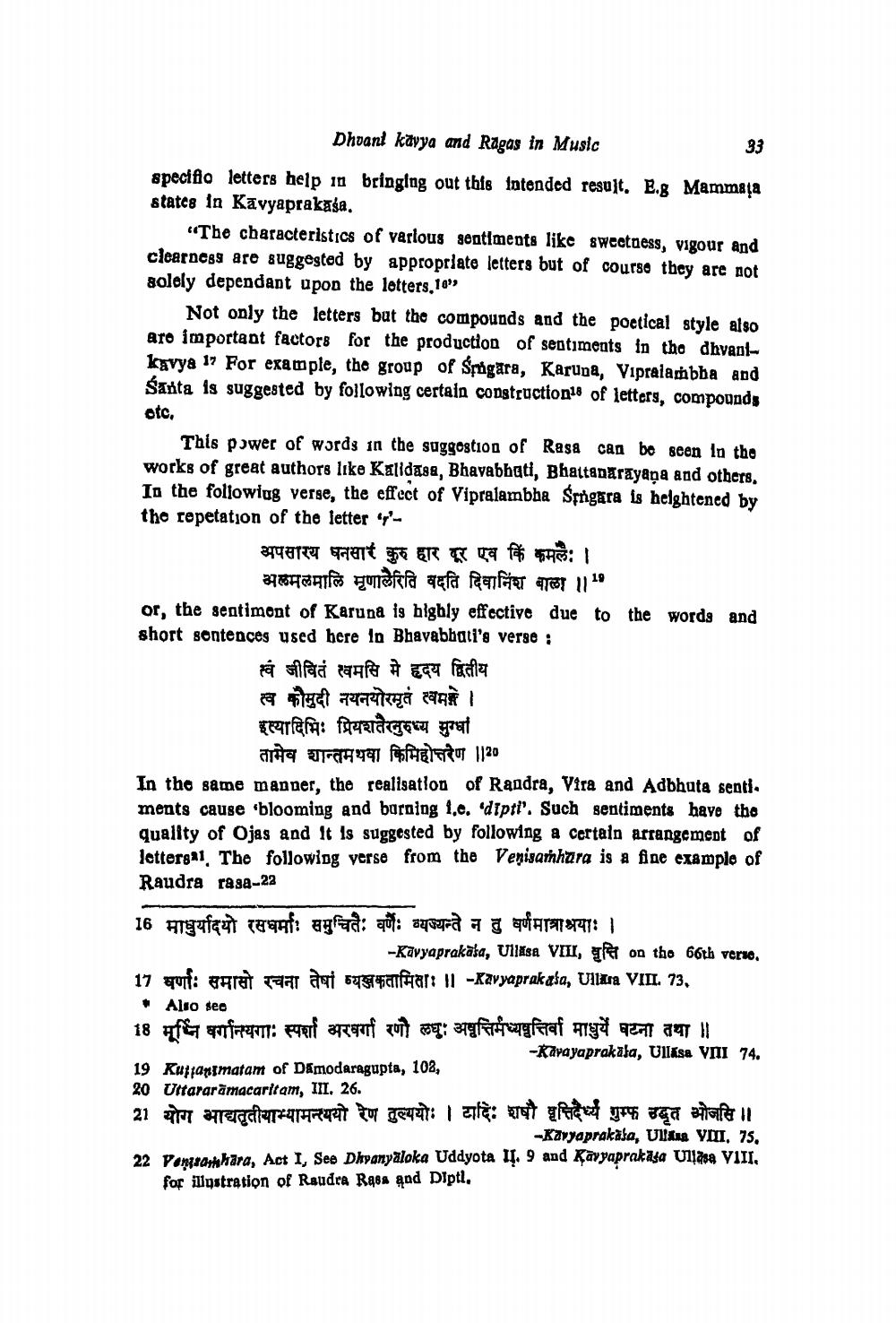________________
Dhvant kavya and Ragas in Music
33
specifio letters help in bringing out this intended result. E.g Mammaļa statcs in Kavyaprakasa.
"The characteristics of various sentiments like sweetness, vigour and clearness are suggested by appropriate letters but of course they are not solely dependant upon the letters.10"
Not only the letters but the compounds and the poetical style also aro important factors for the production of sentiments in tho dhyan - kavya17 For example, the group of Smgara, Karuna, Vipralambha and Santa is suggested by following certain constructionis of letters, compounds otc.
This power of words in the suggestion of Rasa can be seen in the works of great authors like Kalidasa, Bhavabhati, Bhattanarayana and others. In the followiug verse, the effect of Vipralambha Sprigara is heightened by the repetation of the letter 4
अपसारय धनसारं कुरु हार दूर एव किं कमलैः ।
अलमलमालि मृणालेरिति वदति दिवानिश बाला ॥" or, the sentimont of Karuna is highly effective due to the words and short sontences used here in Bhavabhati's verge :
स्वं जीवितं स्वमसि मे हृदय द्वितीय स्व कौमुदी नयनयोरमृतं त्वमझे । इत्यादिभिः प्रियशतैरनुरुध्य मुग्धा
तामेव शान्तमथवा किमिहोत्तरेण ||20 In the same manner, the realisation of Randra, Vira and Adbhuta senti. ments cause blooming and burning 1.e. dipti'. Such sentiments have the quality of Ojas and it is suggested by following a certain arrangement of lettergal. The following yerse from the Venisamhara is a fine example of Raudra rasa-22
16 माधुर्यादयो रसधर्माः समुचितैः वर्णैः व्यज्यन्ते न तु वर्णमात्राश्रयाः ।
-Kavyaprakaka, UiAsa VIII, वृत्ति on the 66th verse. 17 वर्णाः समासो रचना तेषां व्यञ्जकतामिताः || -Kavyaprakata, Uilara VIII. 73.
Also see 18 मूभि वर्गान्यगाः स्पर्शा अरवर्गा रणौ लघुः अनुत्तिर्मध्यवृत्तिर्वा माधुर्ये घटना तथा ॥
-Kavayaprakala, Ullása VIII 74. 19 Ruffanimatam of Damodaragupta, 103, 20 Urtararāmacaritam, III. 26. 21 योग माद्यतृतीयाभ्यामन्त्ययो रेण तुल्ययोः । टादिः शषौ वृत्तिदैर्ध्य गुम्फ उद्धृत भोजसि ।
-Kavyaprakaba, Ulin VIII, 75, 22 Vengeanhara, Act I, See Dhyanyaloka Uddyota Iļ. 9 and Kavpaprakasa Ullasa VIII.
for illustration of Raudra R984 and Dipti,
। टादिः शायौ इन्देिश्य प्राप्त करतो




